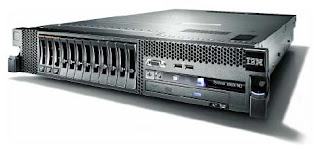The past few days were rather busy - i’ve spent them revamping the current network and infrastructure of a small business - deploying new PCs and the first SBS 2008.
First, lets talk about the hardware. It’s important to know that small businesses handle their infrastructure completely differently than large businesses, and in my opinion there are some things that require “unusual” thinking.
Reliability: an SBS server is extremely critical for operation of a small business and they usually do not replace servers after three years
Maintainability: small businesses do not have dedicated IT personnel. Usually, most “heavy” tasks are done by an IT service provider, and the daily IT tasks are done inhouse by someone as a secondary job
Functionality: small businesses are sometimes just as demanding as larger companies - the small size requires setups that maximize the productivity of each employee
So, there are three main aspects one should focus on when deploying an SBS server.
Reliablity is a key aspect. An SBS server is critical for the business and this requires hardware that is highly capable and reliable. After all, an SBS server can serve a Business for up to five years without replacing the hardware. This is why it makes sense to buy really good hardware that lasts that long, combined with appropriate maintenance contracts to get it back up in case you run into problems.
In this case, we decided to use the following hardware:
.
IBM System x3500 . Intel Quadcore 2.66 Ghz 12M (leaving 1 slot available)
. 10 GB Memory (leaving 6 slots available)
. 8 2.5″ 147GB 10kRPM SAS Disks (leaving 4 slots available)
. ServeRAID 8k with 256MB BBWC (for the first 8 disks)
. ServeRAID 8s with 256MB BBWC (for the other 4 disks)
. Disk configuration:
. RAID 1 consisting of two 147GB Disks
. RAID 5 consisting of five 147GB Disks
. Global Hotspare
. IBM SAS HBA (for tapedrive)
. LTO4 SAS attached HH internal tapedrive
. Redundant fans & power
. IBM Remote Supervisor Adapter II
. 5Y of IBM ServicePac with committed service option
As you can see, the system has lots of storage and redundancy. It’s also important to know that the SBS server does not run any third party applications (except those necessary for operation), the ERP runs on an IBM POWER machine. With SBS 2008, i would not recommend running any third party applications on the SBS itself - if necessary to run third party apps on a server, purchase SBS premium and run the third party apps on the second server.
The second aspect is ease of use, for which we should use software that can be automated as well as possible. SBS handles lots of things on his own, but we opted for a third party backup application because we still see tape backups as the best way to fulfill most of a customers needs. Especially since LTO drives have WORM media, that can help to comply with certain local laws.
As for the software, i’ve installed BackupExec 12.5 to handle the backups to tape. Tape backups are easier to handle for customers, offer superior performance, and make archival and external storage of data easy. Unfortunately, BackupExec 12.5 does not integrate with the SBS Console (yet?).
For virus scan, we’ve opted for McAfee VirusScan Enterprise. A central management application was unfortunately not yet available, so we deployed McAfee manually on each client, and on the server.
Exchange is protected using ForeFront for Exchange, which has served me well in the past.
SBS 2008 has a nice reporting function, but there are other important notifications: the RSA Adapter notifies for all hardware failures like power supplies, fans, etc. independently through e-mail (which can contact external adresses and even works if the failure killed the server), and allows remote troubleshooting in case the machine does not boot. ServeRAID manager and BackupExec also send daily reports to be viewed by the customer.
Last, but not least, is functionality. After all, customers aren’t like me that want an SBS because they like technology - no, they want an SBS to fulfill certain needs their business has.
In this case, there were several unique requirements regarding mailflow - thanks to the included Exchange 2007 server, which offers a very flexible transport rule system i was able to implement these requirements without having to purchase third party software or even program event sinks on our own.
So far, i’ve had zero issues with SBS 2008 - it worked without any problems and hardware support wasn’t a problem either. Looks like IBM got all the kinks figured out since the release of Windows Server 2008 at the beginning of the year.
The System x3500 is also very nice hardware - it looks like a tower variant of the x3650, which i also like very much. The only criticism i have for the machine is that installing the redundant fan kit is total pain in the ass, mostly because the documentation covers both the x3400 and x3500, and some parts don’t apply for the x3500 (but aren’t marked as such).
It shows that IBM can still deliver top notch hardware at affordable prices.
In case you couldn’t figure it out from reading this far, i really like SBS 2008, and it’s ready for action in a production environment. In case you’re thinking about deploying a new SBS, go with SBS 2008!
Category:
Hardware,
Servers,
Windows 11 Comments









